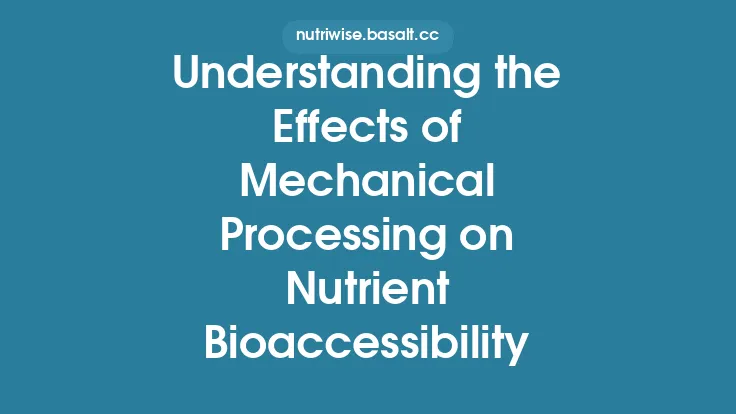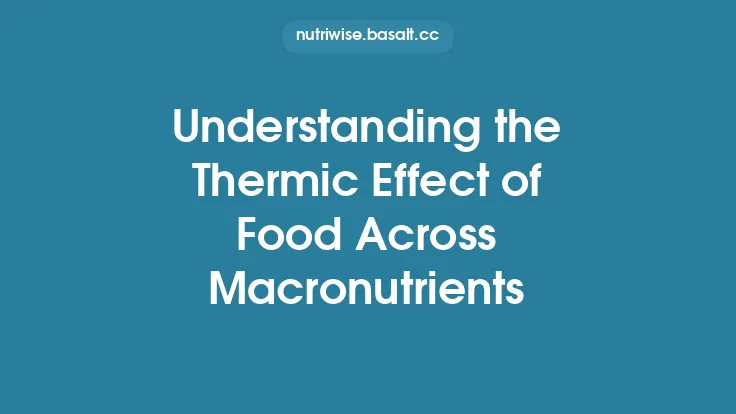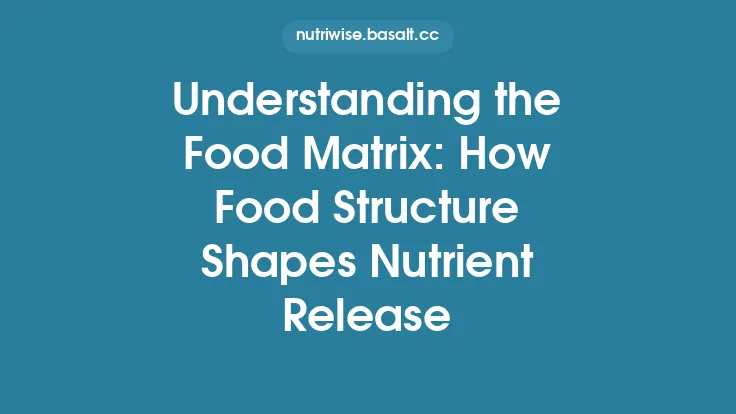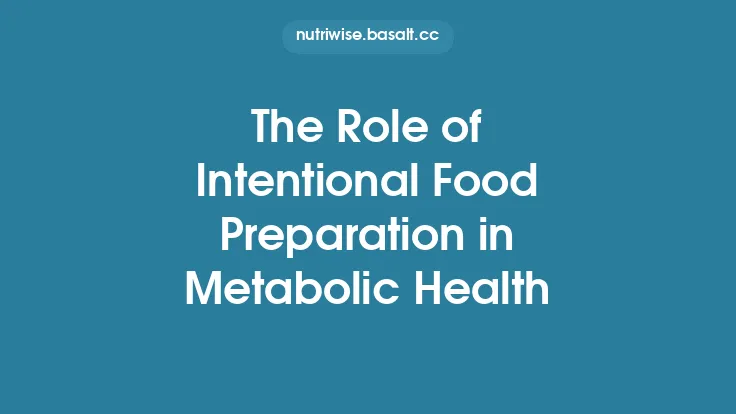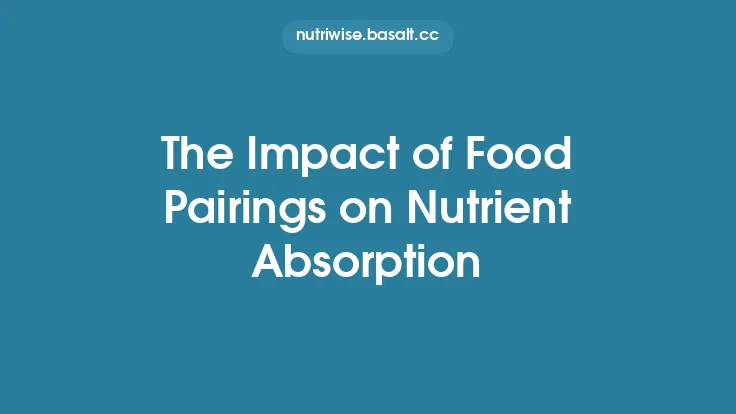Ritualistic food consumption—whether it involves a ceremonial feast, a symbolic offering, or a prescribed sequence of dishes—has been a cornerstone of human societies for millennia. While the cultural meanings of these practices are widely documented, the physiological pathways through which they influence the body are less frequently explored. This article delves into the biological mechanisms that are activated when food is consumed within a ritual framework, highlighting how repeated, culturally embedded eating patterns can shape neuroendocrine function, immune responsiveness, gut microbiota composition, and even gene expression. By understanding these processes, researchers and health professionals can better appreciate the subtle yet profound ways that cultural food traditions intersect with human physiology.
Historical Context of Ritualistic Food Practices
Across continents, ritualized meals have served as markers of life‑stage transitions, communal identity, and cosmological belief. Ancient Egyptian banquets, Japanese *ochugen offerings, Indigenous harvest celebrations, and Hindu prasad* distributions all share a common structure: a prescribed order of preparation, presentation, and consumption that is repeated across generations. This repetition creates a predictable sensory and social environment, which, as modern science shows, can condition physiological systems to respond in consistent ways.
Neurobiological Mechanisms Triggered by Ritual
1. Sensory Cue Conditioning
Rituals are rich in multimodal cues—visual (specific colors of cloth or plates), auditory (chants or bells), olfactory (incense or particular spices), and tactile (hand‑to‑mouth gestures). Repeated pairing of these cues with food intake leads to classical conditioning, whereby the mere presence of the cue can elicit anticipatory neural activity in the gustatory cortex, insula, and orbitofrontal cortex. This anticipatory activation primes the digestive system, enhancing salivation, gastric acid secretion, and pancreatic enzyme release even before the first bite.
2. Dopaminergic Reward Pathways
The predictability and social reinforcement inherent in ritualistic meals amplify dopaminergic signaling in the mesolimbic pathway. Functional imaging studies have demonstrated heightened activity in the nucleus accumbens when participants consume foods within a culturally familiar ritual context versus a neutral setting. This amplified reward response not only reinforces the ritual itself but also modulates motivation, mood, and the perception of satiety.
3. Memory Consolidation and the Hippocampus
Rituals often coincide with significant life events (e.g., weddings, funerals). The emotional salience of these occasions engages the hippocampus, strengthening episodic memory traces linked to the specific foods consumed. Over time, these memories can influence future food preferences and cravings, creating a feedback loop where cultural tradition shapes individual dietary patterns.
Endocrine Responses to Structured Eating Ceremonies
1. Cortisol Modulation
The structured nature of ritual meals can reduce perceived stress, leading to attenuated cortisol spikes during eating. Studies measuring salivary cortisol before and after communal ceremonial meals have reported a 15‑30 % reduction compared with solitary, non‑ritualized meals. This blunted cortisol response can have downstream effects on glucose metabolism and immune function.
2. Oxytocin Release
Physical proximity, eye contact, and synchronized actions (e.g., collective chanting) during ritual consumption stimulate oxytocin release from the hypothalamus. Oxytocin not only promotes social bonding but also exerts anti‑inflammatory effects and influences gastrointestinal motility, contributing to smoother digestion.
3. Insulin Dynamics
Predictable timing and portioning inherent in many rituals can lead to more stable postprandial insulin curves. When participants know exactly when and how much they will eat, the pancreas can anticipate glucose influx, resulting in a more efficient insulin secretory response and reduced glycemic variability.
Impact on the Autonomic Nervous System
Ritualistic meals often involve a transition from a state of anticipation to a state of communal relaxation. This shift is reflected in autonomic balance:
- Parasympathetic Activation: The vagus nerve is stimulated by the act of chewing, the presence of familiar flavors, and the social context, leading to decreased heart rate and increased gastric motility.
- Sympathetic Dampening: The structured environment reduces the “fight‑or‑flight” response, lowering norepinephrine levels and mitigating the stress‑induced inhibition of digestive enzymes.
Heart‑rate variability (HRV) measurements taken during traditional feast ceremonies consistently show higher HRV indices, indicating a dominance of parasympathetic tone and a physiological state conducive to nutrient absorption and tissue repair.
Gut Microbiota Modulation through Repeated Rituals
1. Consistent Substrate Exposure
Rituals often involve specific staple foods (e.g., fermented soy in Korean *jesa, barley in Ethiopian t'ej ceremonies). Regular exposure to these substrates selects for microbial taxa capable of metabolizing them, leading to a stable, ritual‑shaped microbiome profile. For instance, repeated consumption of fermented dairy in certain Balkan rituals enriches Lactobacillus* spp., which are linked to enhanced mucosal barrier function.
2. Microbial Metabolite Production
The predictable fermentation patterns associated with ritual foods can increase short‑chain fatty acid (SCFA) production, particularly butyrate, which serves as an energy source for colonocytes and exerts anti‑inflammatory effects. Elevated SCFA levels have been observed in communities that maintain weekly ceremonial meals featuring whole‑grain porridges.
3. Microbiome‑Brain Axis
Changes in microbial composition influence the production of neuroactive compounds (e.g., GABA, serotonin precursors). The ritual‑induced microbiome shifts can therefore modulate mood and stress resilience, creating a bidirectional loop where cultural practice and gut health reinforce each other.
Immune System Interactions
Ritualistic consumption often coincides with communal gatherings, which can have both protective and challenging implications for immunity:
- Enhanced Mucosal Immunity: The repeated ingestion of specific antigens (e.g., low‑dose exposure to traditional fermented foods) can promote oral tolerance, reducing hypersensitivity reactions.
- Anti‑Inflammatory Cytokine Profiles: Oxytocin and parasympathetic activation during rituals have been shown to increase interleukin‑10 (IL‑10) and decrease tumor necrosis factor‑α (TNF‑α), fostering an anti‑inflammatory milieu.
- Social Buffering: The presence of trusted community members during meals reduces perceived threat, which in turn diminishes stress‑induced immunosuppression.
Epigenetic and Gene Expression Considerations
Emerging research suggests that the psychosocial context of eating can leave epigenetic marks on genes involved in metabolism and stress response:
- DNA Methylation of Metabolic Genes: Repeated exposure to ritual meals with high fiber and low glycemic load has been associated with reduced methylation of the *PPARGC1A* gene, enhancing mitochondrial biogenesis.
- Histone Modifications in Stress Pathways: The consistent activation of oxytocin pathways during communal rituals correlates with increased acetylation of histones at the *OXTR* promoter, potentially upregulating oxytocin receptor expression and reinforcing social bonding mechanisms.
These epigenetic adaptations may be transmitted across generations, contributing to the persistence of health‑related traits within cultural groups.
Psychophysiological Integration and Stress Resilience
The convergence of neural, hormonal, autonomic, and immune responses during ritualistic food consumption creates a holistic state of “integrated homeostasis.” Individuals who regularly participate in such rituals often report:
- Lower baseline anxiety scores measured by the State‑Trait Anxiety Inventory.
- Improved sleep quality, likely mediated by the evening release of oxytocin and the reduction of cortisol.
- Greater perceived control over health, which itself is a predictor of better physiological outcomes.
These subjective benefits are underpinned by measurable physiological changes, illustrating how cultural practices can serve as natural modulators of stress resilience.
Practical Implications for Health Practitioners
- Cultural Competence in Dietary Counseling
Recognizing the physiological benefits of ritualistic eating can help clinicians validate patients’ cultural practices, fostering trust and adherence to nutritional recommendations.
- Incorporating Structured Meals
For patients lacking a ritual framework, clinicians might suggest creating personal “meal rituals” (e.g., designated dining space, pre‑meal breathing exercises) to harness similar neuroendocrine benefits.
- Monitoring Biomarkers
When evaluating patients from communities with strong food rituals, clinicians should consider baseline cortisol, oxytocin, and HRV measurements as part of a comprehensive health assessment.
- Collaborative Community Programs
Public health initiatives can partner with cultural leaders to preserve beneficial ritual practices while integrating evidence‑based health education, ensuring that modernization does not erode protective physiological mechanisms.
Future Research Directions
- Longitudinal Microbiome Studies
Tracking gut microbial changes across generations within ritual‑practicing communities could clarify causality between repeated food ceremonies and microbiota stability.
- Neuroimaging of Ritual Consumption
Functional MRI studies comparing brain activation during ritual versus non‑ritual meals would deepen understanding of reward circuitry modulation.
- Epigenetic Mapping
Whole‑genome methylation analyses before and after sustained participation in specific food rituals could identify target genes for metabolic health.
- Cross‑Cultural Comparative Trials
Randomized controlled trials that introduce structured ritual elements into diverse dietary patterns could test the universality of observed physiological benefits.
By illuminating the intricate web of biological processes set in motion by ritualistic food consumption, we gain a richer appreciation for how cultural traditions are not merely symbolic but are actively woven into the fabric of human physiology. This understanding bridges anthropology and biomedicine, offering pathways to harness age‑old practices for contemporary health promotion while honoring the cultural heritage from which they arise.
